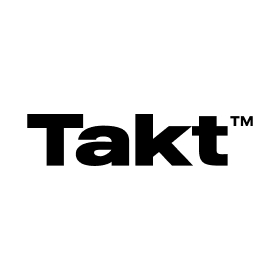
The Ultimate Guide For B2B Content Marketing Strategy
It’s a widespread assumption that B2B content is monotonous. Instead of implementing someone else’s suggestion, a B2B company’s success is more commonly ascribed to their B2B content marketing strategy. The reason for this is simple: what operates for one company may not function for the other, and content assists a client make a solid first impression while researching a product.
Among the most cost-effective methods of raising brand equity is content marketing. However, especially when marketing a B2B product, it’s not as simple as publishing a blog post and sitting back and observing the sales flow. A poor B2B content marketing approach can harm your company’s reputation. Today, we’d like to assist you in avoiding common blunders by providing step-by-step guidance on developing a B2B content strategy.
What is a B2B Content Marketing Strategy?
Content marketing for b2b businesses is an approach for increasing and sharing content to increase traffic, create leads, drive revenue, or build brand awareness. In a B2B marketing strategy, appealing material should be focused, contextually appropriate, and provide utility.
Knowing the organization and its prospective customers is the core of a solid B2B content marketing plan. It addresses the entire customer experience and delivers genuinely useful information that resolves issues and develops trust by meeting customers’ demands. For example, expert B2B content marketing agency Cremarc stands out in the B2B tech sector as a leading agency, focusing on delivering impactful content marketing services. Their approach is rooted in a deep understanding of technology, enabling them to create content that is both informative and engaging.
Their services range from ghostwriting and industry analysis to visual storytelling through infographics, videos, and podcasts. This ensures that your message not only reaches your audience but also resonates with them.
Cremarc’s strategy involves developing a customized content marketing plan aimed at increasing your visibility, enhancing your brand’s profile, and meeting your specific business objectives. They prioritize creating content that aligns with your goals and delivers measurable results. So, if you’re on the hunt for an expert agency for your B2B content marketing needs, Cremarc might be your top choice.
“B2B versus B2C” Content Marketing
Your target market is usually quite large when you run a business-to-consumer business. The consumer for your material in B2B, on the other hand, is a lot more concentrated. Your content should deliberately target major decisions at the companies you work with.
B2B material isn’t frequently posted to social media. We also discovered that B2C material receives roughly ten times the number of social shares as B2B data.
How Does a Successful Business-to-Business Content Strategy Look?
The idea here is that it be beneficial. People don’t browse blog posts or videos to be advertised to, which is something that B2B content marketing agrees with. B2B customers, like buyers, aren’t interested in reading sugary marketing material.
As a result, effective B2B content creation must start with comprehension. It recognizes the company and its position in the market, as well as its clients and the issues they confront. As a result, any strong B2B marketing plan must include a content component and an analytical component.
The sorts of content you’ll deliver due to all that knowledge differ depending on your brand. However, educational information is frequently vital for a B2B audience. A great B2B content marketing plan, on the other hand, does not and cannot end there. It should also include a well-thought-out strategy for evaluating content effectiveness. This entails keeping track of web statistics and also conversion data.
It may appear challenging to create the right piece of content for your services or product, but exploring the finest online content marketing programs may help you understand how to make material that advertises a business and improve customer loyalty and revenues.
How to Create a B2B Content marketing Strategy?
1. Know Your Brand’s Placement
Your positioning strategy is the place your brand occupies, or indeed, the position you desire your brand to occupy in the thoughts of your clients. That’s what sets your firm apart from the competitors. The first stage must be to comprehend your positioning strategy, both as what it is and what it aspires to be. It’s critical to know the responses to both queries.
Understanding your competition to explain their brand positioning best is also an important part of creating your brand. To successfully differentiate while appealing to a comparable group of B2B buyers, you must first identify the businesses you’re competing against.
2. Determine Who You Want to Reach
It’s a marketing guideline that developing information without a well-defined customer group wastes effort. You must understand to whom you are offering your goods and what requirements you are targeting.
While each step is vital, this one is incredibly significant, and it’s worth taking the time to do it right: You need to know who your prospective clients are. What exactly do they require? What issues do they have to deal with?
Both descriptive and analytical statistics studies can provide answers to these problems. This information should be compiled and synthesized so that everyone in your organization can comprehend it.
3. Make a List of Possible Content Subjects
The next stage is content mind mapping or determining which themes are most valuable to your targeted purchasers. There are several methods for locating content marketing themes. To begin, follow these three methods to conduct significant keyword analysis:
- Create a list including all important keywords for your company and product.
- Add more key themes to the list.
- Consider the meaning of every keyword.
Keyword study will assist you in locating high-volume terms and developing content foundations. Then, to construct subject groupings around the center pillar site, you can continue to the more long-tail terms. As a consequence, you’re ready to launch a new content plan.
4. Choose your promotional tools carefully.
It’s time to decide which content platform or outlets you want to concentrate on now that you have a deep knowledge of the economy and your brand’s location within it. Before employing B2B content strategists, this is necessary because different channels require distinct skills and specializations.
You would not want to recruit an entire video crew to discover later that you only require specialist writers. Your knowledge about your target audience will influence your channel selection.
What kind of B2B material do they require? What types of media do they usually consume? Any network that your audience utilizes, and especially any route that they are using to seek assistance, is one that you must think about.
5. Recruit a Unit
It’s essential to recruit your staff when you’ve decided which platforms to emphasize. While everyone can compose a blog post or make a video using their phone, successful B2B content marketing necessitates high-quality material requiring employing experts. A professional team will not only be instruments for making your content ideas an actuality, but they will also be a wellspring of fantastic fresh concepts.
Most businesses employ a mix of in-house and freelance expertise, which is especially useful for B2B content marketing campaigns, which frequently require a combination of skills, industry-specific material, and much more general interest content. Naturally, your team’s experience and skills must represent the outlets you chose to pursue in the preceding phase.
6. Assess Your Outcomes
Now all you have to do is track your progress so you can build on what’s effective and correct or discard what isn’t.
In B2B marketing, monitoring and metrics are critical in every area, and marketing strategy is no different. A majority of your content may fail, even if you have a strong team generating great material based on solid research. Particularly at first. But it would help if you determine which material is failing and why, as well as which adjustments have an influence.
B2B Content Marketing Strategy Checklist
1. Make a Video Marketing Investment
Nowadays, it isn’t easy to comprehend a marketing strategy that doesn’t include video content. Why not engage in clips if they offer such a high return on investment — 78% of organizations say videos have directly increased sales. The benefit of video production is that it is now affordable for businesses of all sizes.
To shoot a successful video, you don’t need to deploy the complete production staff, which is an exciting benefit for small businesses, entrepreneurs, and individual brands. To generate previews in the format of a basic video, you only need basic video production and Photoshop expertise. As you can see, video material may be created for very little money and yet assist in drawing attention to the product.
2. Authentic Research Studies Should Be Published
Participating in a unique, in-depth investigation or a case analysis is the quickest and most convenient approach to developing credibility and reputation in any field. B2B organizations operate in stocks research for their blogs on a constant schedule, and they may even use them in large-scale content marketing initiatives. The following aspects should be included in high-quality B2B data analysis:
- A systematic structure that focuses on significant issues in a certain sector
- Present evidence to back up your main point
- Share one-of-a-kind thoughts to provide a viable solution
- Motivate others to take action
3. Create Landing Pages for Products or Services
Portals are one of the most effective B2B content marketing strategies for a purpose: they are found in the center of the sales pipeline and are responsible for turning prospects into clients. Of course, not every landing page is created identical. Consider these characteristics of good landing pages before actually developing yours to ensure you don’t foul up yours:
- A title that focuses on a need: Make landing page headlines that speak to a specific need that your intended audience has. It’s best to develop distinct pages for each product’s offerings if it has more than one.
- A well-built structure: Arrange the content stream to build to a request without being overly aggressive.
- Evidence-based engagement: A perfect landing page typically includes anecdotes and client reviews to support your details and make your assertions sound authentic.
4. Interact With LinkedIn Publications and Update
Despite popular assumptions, B2B organizations can develop compelling social media campaigns, particularly on LinkedIn, which was created specifically for this reason – businesses rank LinkedIn as the top platform for Marketing management, followed by Twitter.
LinkedIn is about more than merely re-posting your blog content with a few short subtitles. Various sorts of posts can be used to increase engagement on this site.
5. Compose a Newsletter or an Email Program
Email marketing is yet another common B2B content technique. B2B organizations use emails to attract and cultivate leads by delivering unique material, such as newsletters. You may take your email marketing campaign a step further by creating a whole email program to reach prospective customers.
An email program is a series of lectures delivered over email over a predetermined period. You can give each client a certificate once the training is completed. An email program is also a terrific way to present your item and demonstrate its worth to a potential consumer. Each session can include a hands-on component in which you can demonstrate how your product performs and what it does. It’s an excellent approach to promoting your goods without being overbearing.
6. Spend Money on Seminars or a Podcast
A seminar is another B2B content product marketing approach. Like an email program, a seminar is typically only accessible online and concentrates on one product’s real-world applications.
A podcast is another great content source to include in your B2B business model, particularly if you want to enlighten your customers – three out of every four podcast users listen to learn new things. Podcasts are adaptable because they may be tailored to any subject or sector.
7. For a Blog, Create “How-To” Tutorials
We also know that research studies can add value to your blogging, but the reality is that they won’t show up very often because research takes time. Furthermore, conducting too much investigation can make your site appear unnecessarily intellectual.
You can produce how-to tips regularly, which have equivalent value to research and studies but require less time. Content like this is common in content-based advertising because it’s the quickest way to establish credibility in your field.
Conclusion
There’s no disputing this: B2B organizations with great content strategy are destined to win – and the tactics and initiatives we examined in this article back up this assertion.
However, just like any other content marketing strategy, Business-to-business content must have a defined purpose, meet the precise need of a highly specific demographic, be distinctive, and exist on the right route to achieve the correct clients.
It doesn’t seem easy. Developing a strong B2B content marketing plan is a lot of work. But, in terms of strategy alternatives, are you restricted? No, on the flip, you can customize any content to meet your requirements. The important thing to remember is that your material should be purposeful and have a clear objective.
You can also check our brand new best content marketing agencies in the USA and top content marketing companies in the UK directories if you’re looking for one.























